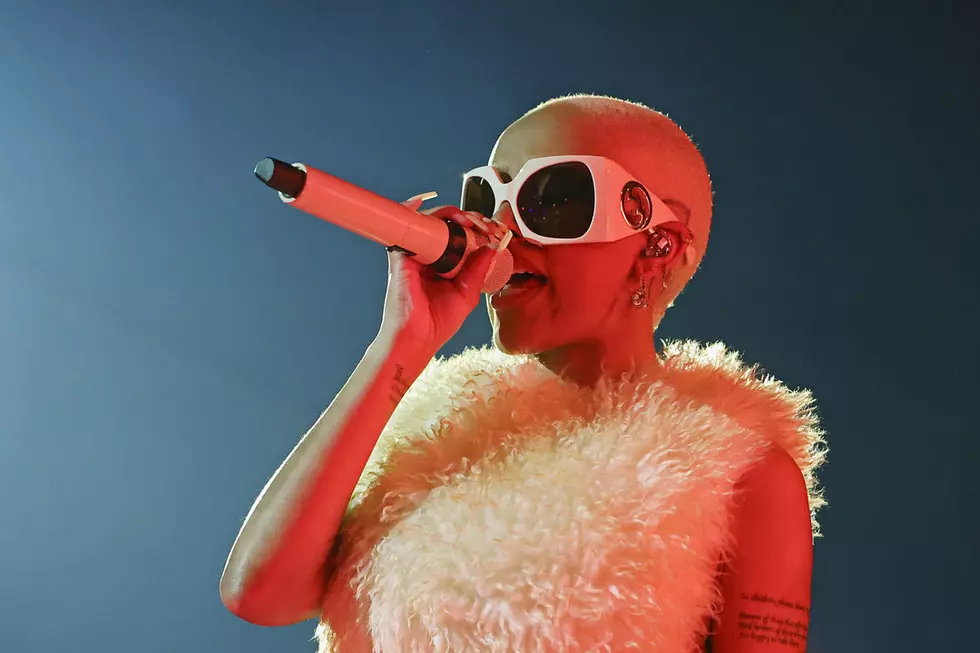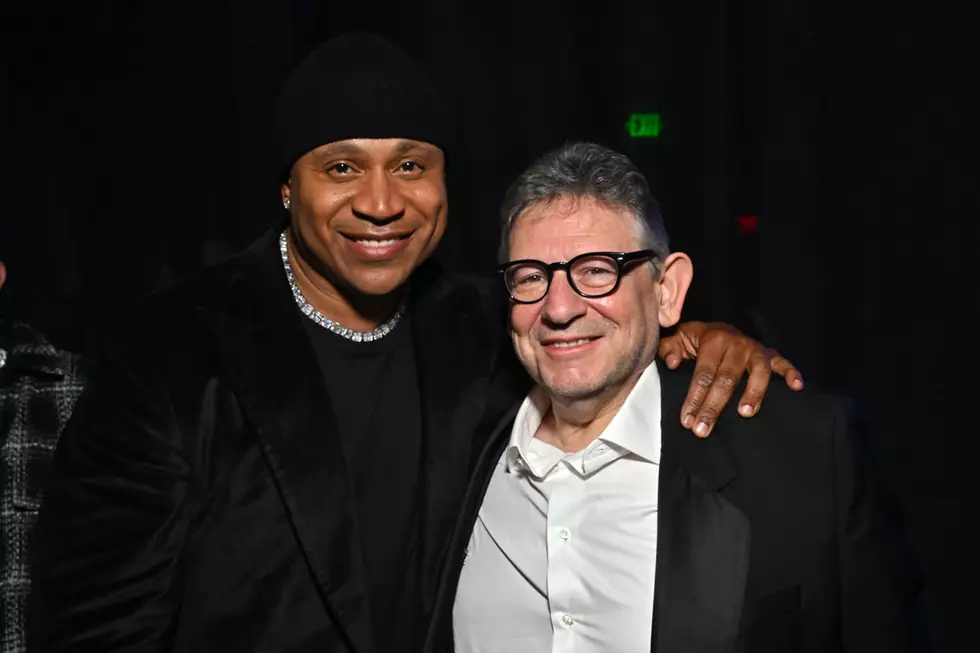
G-Eazy Is Finding His Own Sound on His Next Album
Classic Man
Bay Area MC G-Eazy created a solid fanbase with the release of his first album. Now he tries to recreate the magic.
Words Jeff Weiss
Editor’s Note: This story originally appeared in the Fall 2015 issue of of XXL Magazine, on stands now.
It was 3 a.m. in New York City’s Quad Recording Studios on a late night last winter and G-Eazy thought he was finished recording for the night. The Oakland rapper and his frequent collaborator, the producer/singer Remo, had already written a hook, arranged the song and tracked it out. They played it back once more to survey the evening’s work they had been crafting for G-Eazy’s upcoming second album, When It’s Dark Out. Over booming staccato kick drums and eerie synths, a doomed angelic voice sang a sad, soothing chorus: “Even if I don’t stay, everything will be okay.” The consolatory words caused goose bumps.
G-Eazy figured it was time to leave the studio where 2Pac famously got shot and return home to his Airbnb rental in SoHo. Then a total stranger walked into the room. “He immediately asks me, ‘Are you scared of this song?’ I was like, ‘What do you mean?’” G-Eazy re-tells the story, six months later at a different studio on a different coast, at Hollywood, Calif.’s famed Record Plant. On this August evening he rocks a red and black flannel, jeans, retro Jordans, Oakland A’s hat and a thin gold necklace. The only marker of wealth is a big-faced watch. “He was like, ‘This is going to be the most important song you’ve done.’”
Since the release of his major label debut LP, These Things Happen (RVG/BPG/RCA), last year, the lanky leather jacketed rapper born Gerald Gillum has spent more time in studios in New York, L.A. and Atlanta than in any one permanent residence. All summer, the Bay Area native jetted from one festival to the next, recording almost every night in between.
He’s all too aware of the do-or-die ultimatum for When It’s Dark Out. Avoiding the sophomore jinx is the elephant in the room. By most metrics, These Things Happen was one of last year’s biggest surprise successes in hip-hop. It debuted at No. 3 on the Billboard 200, sold 236,000 copies to date and had lead single “I Mean It,” which racked up 38 million YouTube views.
The album helped catapult G-Eazy from a blog buzzing contender, into one of the industry’s highest hopes. There were dinners with Jay Z and Kobe Bryant even called Eazy a “Young Elvis.” “I’ve seen G-Eazy grow from his very early stages at Loyola University in New Orleans when I let him open for a Lil Wayne show,” says Cortez Bryant, the co-CEO of The Blueprint Group (Lil Wayne, Nicki Minaj, T.I), who co-manages G-Eazy. “I didn’t understand it at the time and asked, ‘Who’s this goofy White kid?’” I haven’t been more excited about an artist since we picked up Drake.”
These Things Happen established Eazy as a vaunted young star, but left him a couple steps away from cultural ubiquity. He’s too big for the underground, but not yet totally mainstream. To become a cultural force, he knows he needs radio play, Grammy nominations, MTV Moon Men. He wants it all, but without being ensnared by the obvious clichés: contrived big-name collabos, shameless trend chasing and compromising his own tastes.
“Music is only special when it’s coming from a genuine place—it’s just energy trapped in a bottle,” G-Eazy says. “You can tell when someone is reading the lines of a song or performing it. If you do a great song with your friend, what’s the rush to replace them with a superstar?”
Of course, he sees both sides. Everyone wants to go gold and platinum, and piggybacking off a bigger star is one of the quickest routes. Yet, G-Eazy opted for a more difficult path—navigating internal emotions and exposing a vulnerability and honesty that he’d previously only hinted at. The breakthrough came that early morning in New York. “The guy, Jean, came in the room that day and told me, ‘You have to do this right,’” the rapper says, returning to that prophetic session. (Eazy later discovered that the stranger was veteran hip-hop A&R Jean Nelson who’s currently President of Blueprint Group Records.) “He was like, ‘I’ve told Jay Z to re-write verses. You gotta do this now.’ I didn’t even know who the guy was, but I was like, ‘Fuck it.’”
With most of the studio passed out stoned, G-Eazy brewed a pot of coffee and pulled an all-nighter. The visceral emotion of the beat and chorus then inspired the most powerful song he’d ever written. The first verse chronicled the growing distance between his longtime friends back home as he chased stardom on the road. The next 16 bars concerned his guilt at going away to Loyola University and leaving his younger brother all alone with their mother. Shortly after, his mother lost her job and endured serious illness, forcing his brother to shoulder the brunt of the burden.
But it’s the last verse of the record, “Everything Will Be Okay,” which should make it on the LP, that makes it the most important song the 26-year-old has ever made. It tells the true story of his mother’s long-term relationship with a woman, touching upon his initial confusion and eventual acceptance. It ends in tragedy—with Eazy’s mother’s partner suffering crippling depression and pill addiction. The most chilling moment is the finale, when a 16-year-old G-Eazy finds her dead body in the basement of their house. “I went to tell her that dinner was ready, and then, you know..." G-Eazy explains of the story he tells in the song.
Often cocky to the point of arrogance on record, his voice grows soft and trails off. You can immediately sense that this isn’t exaggeration or the kind of story that he's told many times. He mentions the awkwardness of crying in the recording booth while writing it. When he presented the song to the members of his own team, most never knew about that chapter of his life. “I was embarrassed that I judged her in the first place, but I finally came around to understand that my dad treated my mom like shit and this person loved her and it didn’t matter if it was a man or a woman or whatever color she was,” G-Eazy says. “Energy is energy and love is love. Right around the time I finally came of age and accepted her and grew close with her, she started to slip into this dark place and it just happened.”
Darkness is a pervasive theme throughout his second album, fittingly titled When It’s Dark Out. Due out this fall, G-Eazy carefully studied some of his favorite sophomore albums: most notably, Kanye West’s Late Registration and Eminem’s Marshall Mathers LP. Despite the serious overtones of several songs, he’s careful to include a sense of balance. He wants to win over the skeptics who see him as just a White rapper pretty boy, but simultaneously supply his longtime fans with shit-talking invincible party anthems too. Or as he says on one of the album’s first tracks: it’s that “Bruce Wayne Lamborghini music.”
The beats are orchestral, cinematic and ominous. The idea was to create a sinister rabbit hole reminiscent of Tim Burton movies Batman, Edward Scissorhands or The Nightmare Before Christmas. The sound falls between a Danny Elfman score and Drake.
One of the main knocks on Eazy’s debut was that it only occasionally transcended his influences. Listeners heard a little Drake, A$AP Rocky, Childish Gambino and Big Sean. There were traces of the slickness of local influences like Mac Dre and E-40. The talent and savvy branding were obvious, but G-Eazy remained a work in progress.
For this album, he’s harnessed his own sound—one that might still bear a slight debt to his forebears, but that’s much closer to the artist he wants to become. His rapping is also more agile and fluid, allowing him to tackle beats that might have previously tripped him up.
Like most rap stars, there are at least two sides to him. The struggle is to find a way to contain them both on record without compartmentalizing. Many of the subjects of his sophomore album also concern the spoils of fame. He sneers that, “I’m young, rich and handsome, this is not random.”
“There’s Gerald and there’s G-Eazy—the extraordinary super-villain who gives no fucks and does whatever he wants,” he says. “But I want people to identify with Gerald too. The trick is to get both sides to fit.”
Buried under the braggadocio are the thousands of hours of isolation. G-Eazy started out selling mixtapes full of post-hyphy slaps. Studying the music industry at Loyola, he holed up in his dorm, cutting mixtapes and hoping to break out of the Internet maze. He finally did it with “Runaround Sue,” where he sampled Dion and made his first viral video.
After an intense bidding war, RCA eventually offered a deal with promises of full creative control. On When It’s Dark Out, he’s learned to embrace all sides, stifling any remnants of self-consciousness. He understands that what you’re most afraid to admit is often what resonates the most. “I want people to connect and identify with the stories and hope it means something a year from now or more,” G-Eazy says. “You make music within this lonely space in a room with no windows for months on end. And then you just put it out. All you can do is dig deep and pour out everything you have.”
Check out more from our Fall 2015 issue including our cover story with Future and interviews with Mac Miller, Scarface, Damian Lillard and August Alsina, a look at the beef between Meek Mill and Drake compared to 50 Cent and Ja Rule, profiles on Southside, Metro Boomin and London On Da Track and more.
More From XXL









